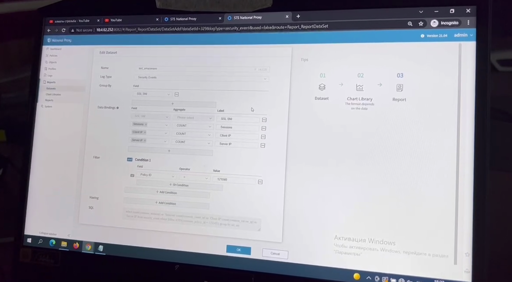cross-posted from: https://lemmy.sdf.org/post/45192281
[…]
In a historic breach of China’s censorship infrastructure, internal data were leaked from Chinese infrastructure firms associated with the Great Firewall (GFW) in September this year. Researchers now estimate that the data has a volume of approximately 600 GB.
The material includes more than 100,000 documents, internal source code, work logs, configuration files, emails, technical manuals, and operational runbooks. The number of files in the dump is reported to be in the thousands, though exact totals vary by source.
[…]
An unexpected but critical component of the breach is the metadata embedded within documents and logs. Authorship tags, file paths, and computer hostnames have linked hundreds of documents to individual users, systems, and organizations. These human fingerprints offer unprecedented visibility into the organizational structure behind the GFW’s operation. Engineers, data analysts, lab researchers, and regional technicians are all traceable by name or system alias. Many entries refer to known ISPs, national labs, or university-affiliated nodes, suggesting that the enforcement apparatus spans a wide constellation of public-private partnerships, military-academic collaborations, and centralized policy deployment.
Together, these findings constitute a unique technical cross-section of the Chinese censorship-industrial complex, revealing not just what is filtered or how, but who enforces it, who maintains the infrastructure, and how decisions flow through the layered topology of digital control.
[…]
The current report represents only the first installment in a three-part investigative series into the unprecedented breach of China’s censorship apparatus. While this Part 1 has centered on exposing the dataset’s contents and evaluating its technical, organizational, and strategic significance, it is only the beginning. The sheer scale and complexity of the leak, over 500GB of internal GFW infrastructure data, demands a methodical, layered approach to fully grasp its implications.
The next two parts in this series will delve even deeper, uncovering the architecture of China’s censorship regime and examining the wider consequences for global digital governance.
Part 2 of the series will look into the architecture and will offer a forensic reconstruction of how the Great Firewall actually works at the technical level, mapping the core design of the censorship stack. This includes how packets are intercepted, filtered, redirected, or dropped; how apps like Psiphon and V2Ray are detected at the protocol level; and how traffic shaping is deployed based on geography, ISP, or session context.
Part 3 will the geopolitics and the fallout will address the broader implications. This breach does more than just reveal technical controls, it changes the strategic calculus of censorship resistance. We will assess how the exposure reshapes China’s ability to sustain its domestic information control and international cyber operations, and how it informs countermeasures by VPN developers, privacy advocates, and democratic governments. Ethical and legal questions will also be raised: what does responsible engagement with such data look like?
[…]
With this series, we aim to present not just the most complete picture yet of the GFW, but a roadmap for pushing back against the machinery of state censorship.
With this series, we aim to present not just the most complete picture yet of the GFW, but a roadmap for pushing back against the machinery of state censorship.
It’s definitely a deep technical dive into the underlying infrastructure of Chinese internet services. But I’m not seeing any of this in the guts of the article.
But I’m not seeing any of this in the guts of the article.
It’s a 3 part series so presumably that kind of content will be coming in either Parts 2 or 3.
The articles reads like it’s AI generated, constantly repeating the same points.
So in China are hackers just known as the Mongolians?
This “GFW” is so lame. FYI, I could literally just call my aunts in China right now and tell them about everything happening in the west. I mean my parents and my aunts talk all the time on phone calls.
Edit: Don’t know what’s with the downvotes, I don’t support the GFW if you’re confused, but I’m just saying their stupid firewall aint gonna actually stop the flow of information from the overseas diaspora population from flowing back into China.
GFW is futile.Edit 2: Okay maybe not “futile”, but my point is: It’s not as effective as it seems. Its quite fragile lol.
The GFW is about logging, mining, and controlling Internet traffic and data but your comment is about phone calls. These two things are only loosely related.
The article purports that the GFW is able to track electronic documents so closely that it can tie them to an actual individual. Assuming that’s true it positively refutes the notion that the GFW is “futile”. If the article and data leak are accurate then we also have proof that the GFW has the capability to detect many kinds of VPN despite strong obfuscation efforts and potentially decrypt the data streams. That is not “futile”, it’s scary AF.
Specific to phone calls you and your Aunties can chatter about whatever you like but there’s a strong possibility that those calls are being recorded, transcribed, and reviewed by automated systems for potential real world action. We know that the American NSA has this capability so it’s a near certainty that the Chinese Government does as well.
The sense of security is what makes the tongues talk and the users browse, them incriminating themselves openly. Overly violent law that puts everyone in the grey zone allows you to pick anyone you want at any time and jail them. Government/party structure of any size is pretty much unable to track everyone 24/7, so while it’s seemingly a compromise from the idealistic vision of the great firewall, it is better to control a thing that organically rise with or without your involvement. If it could’ve been inpenetrateable, we could’ve heard of alternative systems appearing, but there you see none of these, at least for average consumers. It is there, and while it’s not overingineered, it’s enough to make 50% of safe, normie people give up and other 50% marks itself, and, unless everything is e2e encrypted, writes it’s court cases for itself.






